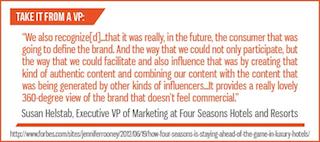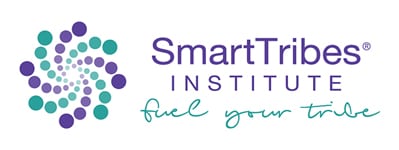
4 Content Marketing Mistakes That Will Wreck Your ROI
July 30, 2014
Increase Customer Acquisition By 400% With Storytelling
October 31, 2014
Gartner says that in 2017 CMOs will have a bigger share of the technology budget than CIOs.
Mayur Gupta, Global Head, Marketing Technology & Operation at Kimberly-Clark, says it is not about the C-Suite or the budget—the customer is in charge now, and more than ever before. I caught up with him recently to tap his brilliant brain.
They’ve Got The Power And Pull
Thanks to the vast quantities of info available, the customer now has the ability to make smart choices with speed and agility anytime and anywhere she wants. Not only is she in charge and in full control but she is also moving faster than most brands. She does not differentiate between channels and touch points–expects brands to behave the same way.
While the customer has become omni-channel, and always on, brands and marketers still operate and think in a multi-channel model. Brands are still channel-obsessed keeping the channel–the medium where they’re delivering amessage, albeit web, mobile, print, etc all important. They still think the message orbits around the channel. But it doesn’t. It orbits around the customer.
Now Mayur says this fundamental shift from thinking channels to thinking customers isn’t easy: it requires a change in the entire operating model. But for brands to be competitive (or even have a shot at keeping and gaining customers) it’s time to switch.
So what are the key shifts that brands and marketers need to create a customer-centric operating model? Read on…
The Five Shifting Principles of Customer Centric Marketing
1. From Just in Time to Life-Time Value (LTV)
Seth Godin sums it up well in his post on Thinking Lifetime:
“The thing is, a customer is never out of warranty, even if his product is.”
He explains how brands need to stop thinking about time on the phone spent with customers or cost per hour of support people—sales at a given point of time. Instead they should start focusing on “lifetime, all the time”, thinking about customer relationship as an “always on” engagement rather than a point in time interaction.
2. From Storytelling to Story-building
It seems that suddenly everything is about storytelling it is the thing that gets associated with “everything.” In the book StoryScaping , Gaston Legorburu and Darren McColl illustrate a similar art that they call storyscaping which moves from creating universal stories to delivering ever-innovative ways of placing the customer at the center of the story, reassigning customers from the role of audience to the role of a protagonist. It is their journey that matters.
3. From Channel First to Customer First
While the customers have truly become OMNI-CHANNEL where they are only concerned about the experience, the story and the value (customer first), the brands are still operating in a MULTI-CHANNEL model (channel first). How often do you talk about “mobile first”, or “TV first”? Is that relevant if you actually have the customer at the center? The question of a channel being first or second should not even exist in an “omni-channel” model– the customer does not differentiate between channels–in fact she expects a frictionless and seamless experience across them.
4. From Customer Segments to Individuals: the Universal Customer Profile
The evolution of data and technology has enabled modern marketing to be more precise, relevant, personalized and most importantly contextual. Shift from thinking target audiences and customer segments to personalization, context and predicting customer behavior. This requires brands to converge the isolated and fragmented data sets across first party, second party and third party customer data into a connected, universal 360 customer profile. This profile is channel agnostic and impacts every single touch point.
5. From the Conscious to the Sub-conscious Customer Research
Modern marketing demands an end to traditional customer research and the famous focused groups or the “sitting-behind-the-glass research.” Many new product launches fail because they assume customers make a conscious decision while buying products. Instead 90% of the decision-making happens in the sub-conscious–which does not play a role in the standard research set of questions and answers. Instead, brands need to become more “experimental”, focusing on big testing and big learning (not just big data) to understand customer behavior, expectations and patterns in real time–or just in time–and use the learning to drive relevant customer experiences that influence and inspire desired behavior.
Mayur’s list may not exhaustive, and every marketer and brand may have their own models and principles. However one thing is certain: we live and market in a digital world which is now controlled and driven by the customer. For brands to succeed they must make this customer the hero of their story.
The customer was always the center of the universe. Just now it’s time for us to remember.





